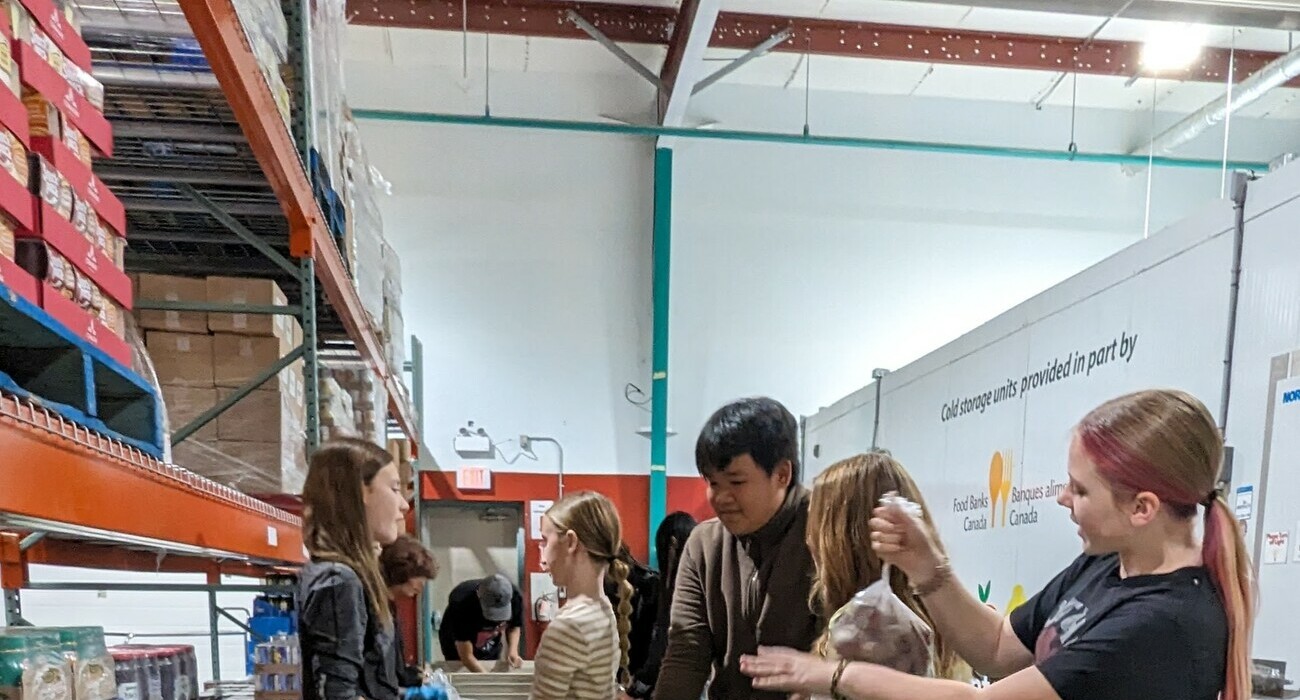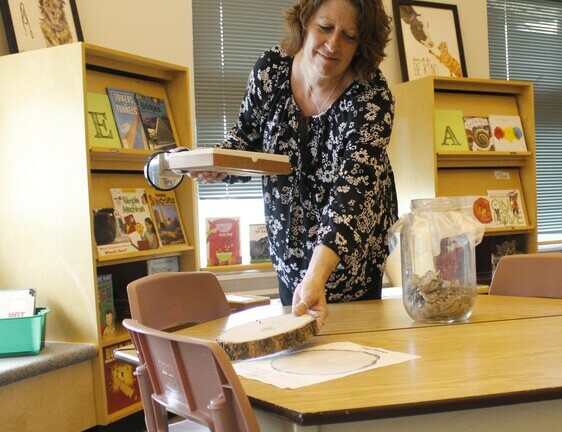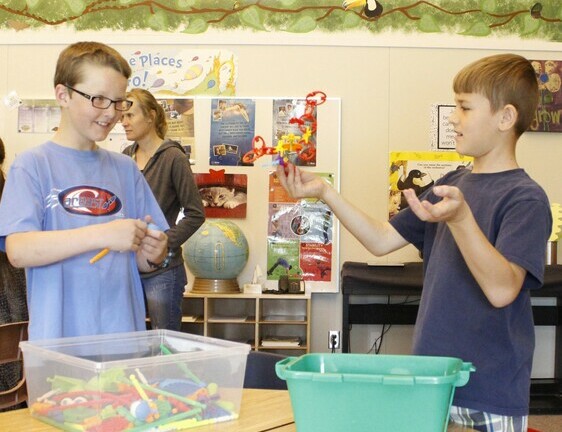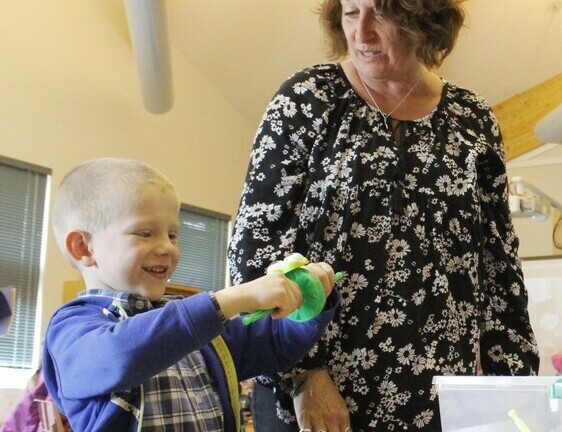
COALDALE — A labour of love for an elementary school librarian has given students access to a unique space for exploring science, technology, engineering, art and mathematics.
Sue Wells, the librarian at Jennie Emery Elementary School, was inspired to create a STEAM room when space became available in the learning commons.
The space once served as a small, sunny classroom. Since December, students and teachers have been able to use the transformed space to explore topics from rocks, to space, to geometry, and let their imaginations run wild.
Wells said she started by researching STEM (Science, Technology, Engineering and Mathematics) and STEAM programs, which add the arts to the mix.
Out of that, she developed activity centres that encourage students to learn in ways that suit their style. In one window seat, books invite young readers to read about space. In another window seat, you’ll find a deck of cards, each with an optical illusion. At one table you’ll find a wasp nest in a jar and displays of rocks and minerals, with a supply of magnifying glasses. There are art supplies including sheets that invite students to answer open-ended questions. One, for example, shows an empty nest, and students are invited to draw eggs and think about what kind of bird lives inside. Another sheet has a cartoon depiction of a person’s head, with the cranium open like a lid, inviting students to draw the ideas in their own minds.
On a computer, there’s a live stream from the Kitten Academy, a rescue organization. The stream shows how technology can connect us across distance and in real time.
“Some students had a hard time understanding that this wasn’t a movie they were watching,” Wells says. “I’ve had to explain that if you travelled there, right now, this is exactly what you would see happening.”
On the floor are pictures of various scenes, and a bin of geometric shapes. It’s a tangram, a geometric puzzle that challenges students to recreate the pictures using various triangles, rectangles, trapezoids and other shapes.
“If you ask them what they’re doing, the kids say they’re having fun,” Wells says. “They don’t realize they’re doing math.”
On one wall hangs a snake skin, from a former reptilian resident of the school. In an opposite corner there’s a music space. Depending on the noise level, Wells might have music playing as students work.
There are K’nex and other building toys on another table.
“I really like watching kids with the building toys,” Wells says. “They come up with things I would never dream of. They’re so creative.
“I don’t really interfere with what they do at the centres. The only time I intervene is if there are too many students at one activity.”
That problem usually doesn’t happen because students don’t follow the crowd in the STEAM room. They are drawn to certain things and they explore what and how they want. If a student wants to sit and read, rather than do something hands-on, that’s OK, too.
Each class of Grade 1-4 students has one, 30-minute block of learning commons time each month booked in the STEAM room. Teachers can also book the space to supplement their own lessons, and outside groups, such as Scientists in Schools, also use the space when they visit.
Wells says she was initially concerned with how students would take to this unstructured makerspace, a place for sharing ideas, equipment and knowledge.
Her fears were unfounded. The students dove in, and the centres are challenging these young thinkers.
Wells points to a stack of colour photos of different animals. Students were asked to sketch the animal of their choice in pencil. Soon, they were asking for crayons because already, it seems, they’ve been programmed to believe their pictures needed to be in colour. Wells held fast, and encouraged students to think in a different way.
Principal Sherrie Nickel credits Wells for pouring her heart and personal time into the space, over and above the demands of managing the learning commons and leading weekly sessions with 21 different classes and more than 400 students. Wells managed to breathe new life into items that had been collecting dust around the building, like microscopes the school inherited from other programs when it opened in 1994. Toys Wells’ son outgrew have also found their way into the space.
Nickel says students’ response has been amazing.
“What I see in the kids is sort of defying stereotypes,” she says. “I thought girls would be squeamish with the snakeskin or not interested in the bugs, but they are. It defies the stereotypes I held.
“The STEAM room fits with the concept of being visionary and perceiving school in a less traditional way. That’s what we’re really trying to do is to meet the kids where they are. It’s one more opportunity for kids to explore, to be creative and to work outside boundaries.”
On Wednesday, Wells welcomed kindergarten, Grade 4 and 5 students from Huntsville School in Iron Springs. During their visit, she showed students the travelling art exhibit called “When We Were Young.” Artist Wendy Struck will lead a workshop for JEES Grade 2 students on May 31. The visit and exhibit are made possible by the Alberta Foundation for the Arts Travelling Exhibition Program.
It didn’t take long, however, for the Huntsville students to make themselves at home in the STEAM room, excitedly trying out the various centres, and finding something interesting in every corner.
Wells smiles at their reaction, and at how many Jennie Emery students ask for STEAM room time.
“I’m learning,” she says. “That’s what I love about it, too. Five years ago, if someone had said you’re going to open a science room, I would have said ‘No way.’ ”
Seeing the STEAM room for the first time
Students from Huntsville School visited Jennie Emery Elementary in Coaldale on May 24 to experience the learning commons, a travelling art exhibit and the new STEAM room





